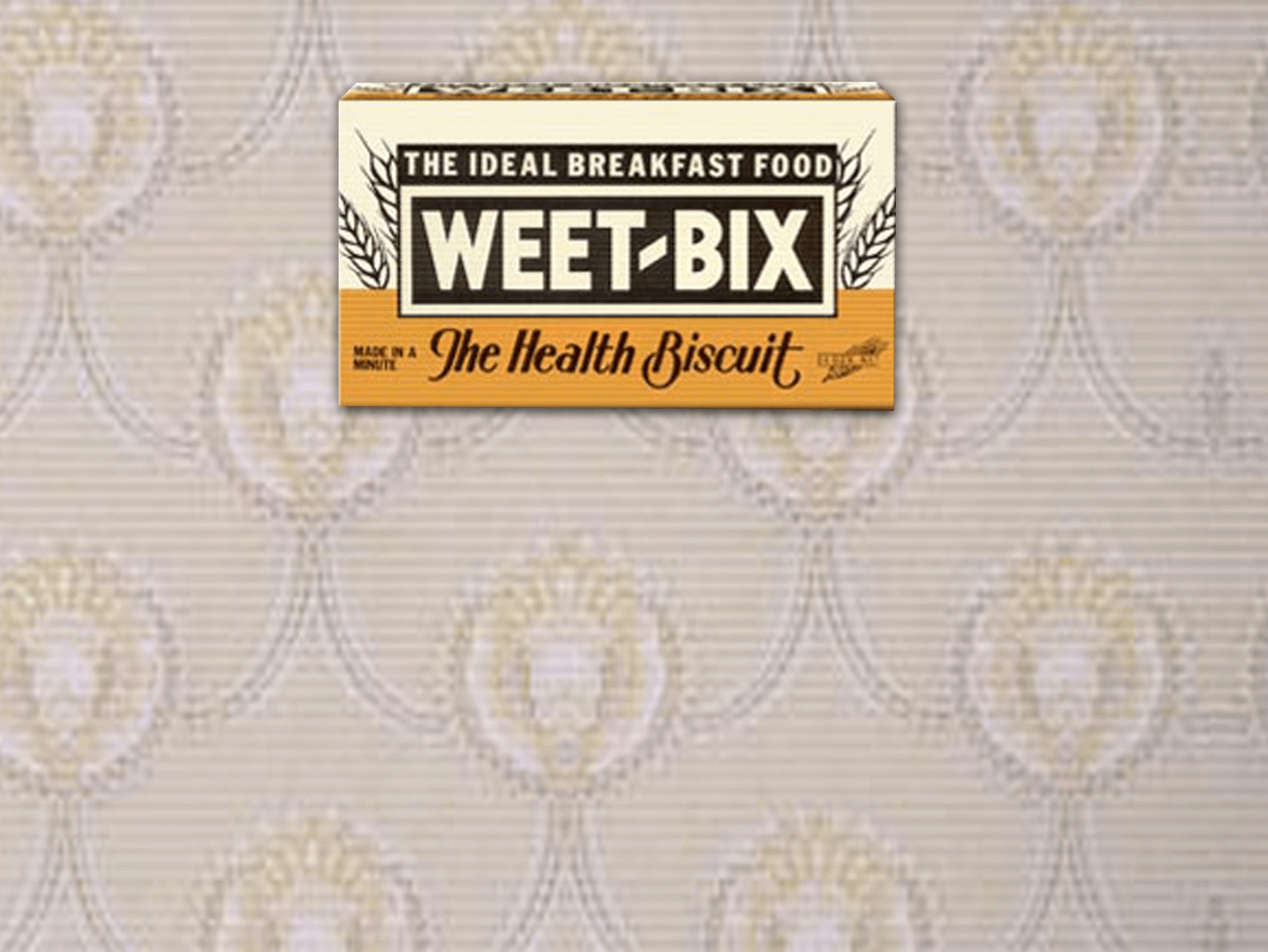Weet-Bix™
History Timeline
Weet-Bix Kids kick on—Tim Cahill reaches an incredible fourth World Cup and Stephanie Gilmore surfs her way to her seventh world championship.
Weet-Bix Kids TRYathlon gets more kids moving.
Gluten Free Weet-Bix gets a lot of love. Adding plant sterols makes Weet-Bix Cholesterol Lowering.
In 2018 Weet-Bix celebrates 90 years as Australia’s favourite breakfast cereal.
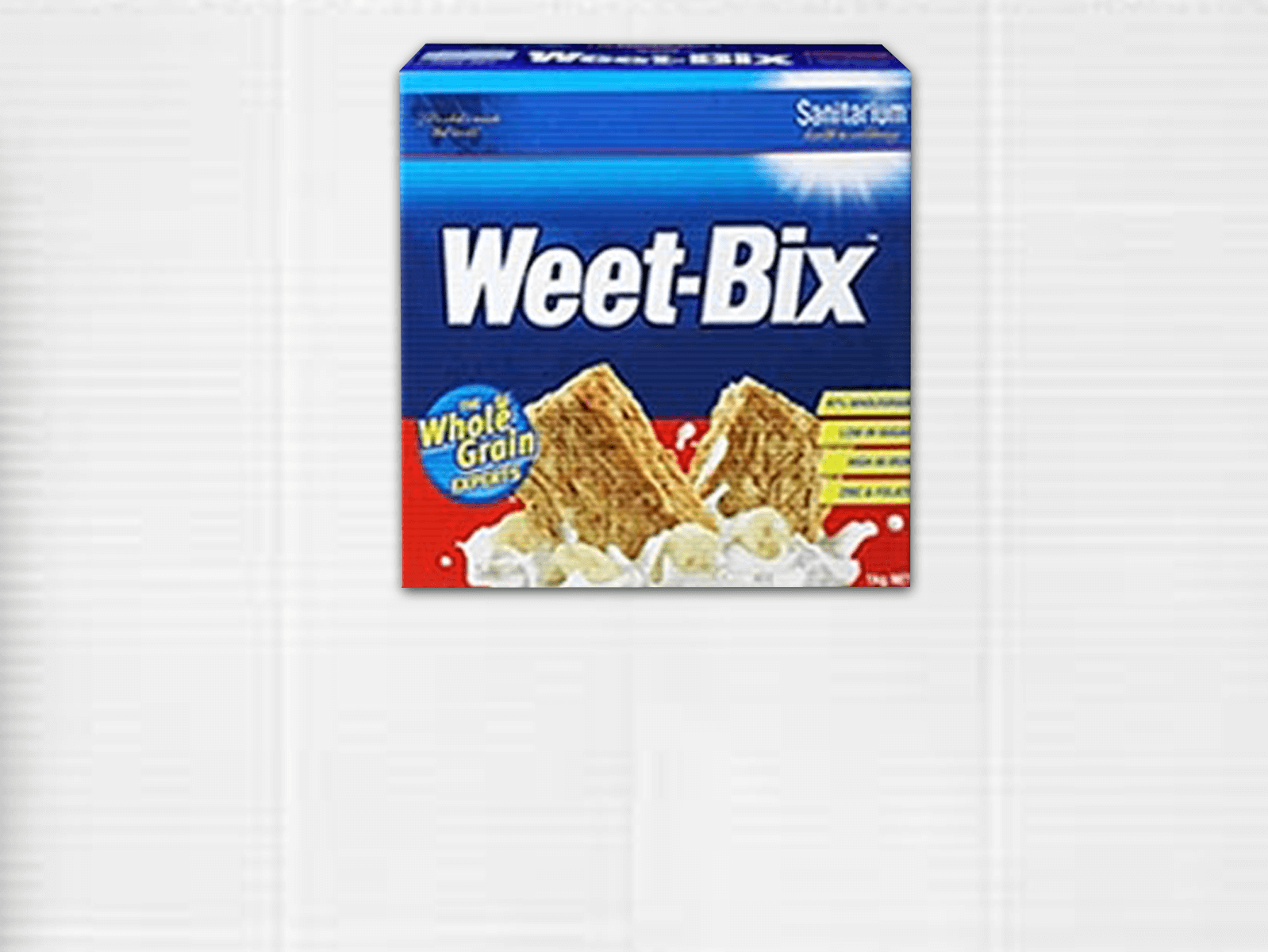
Weet-Bix remains great value at only 9c per Bix.
The Australian Institute of Sport selects Weet-Bix as an official cereal for its athletes and Weet-Bix powers the QANTAS Socceroos to the 3rd round of the 2006 World Cup.
Weet-Bix invites Australians to choose their side — Ford or Holden — in its V8 Supercars promotion.
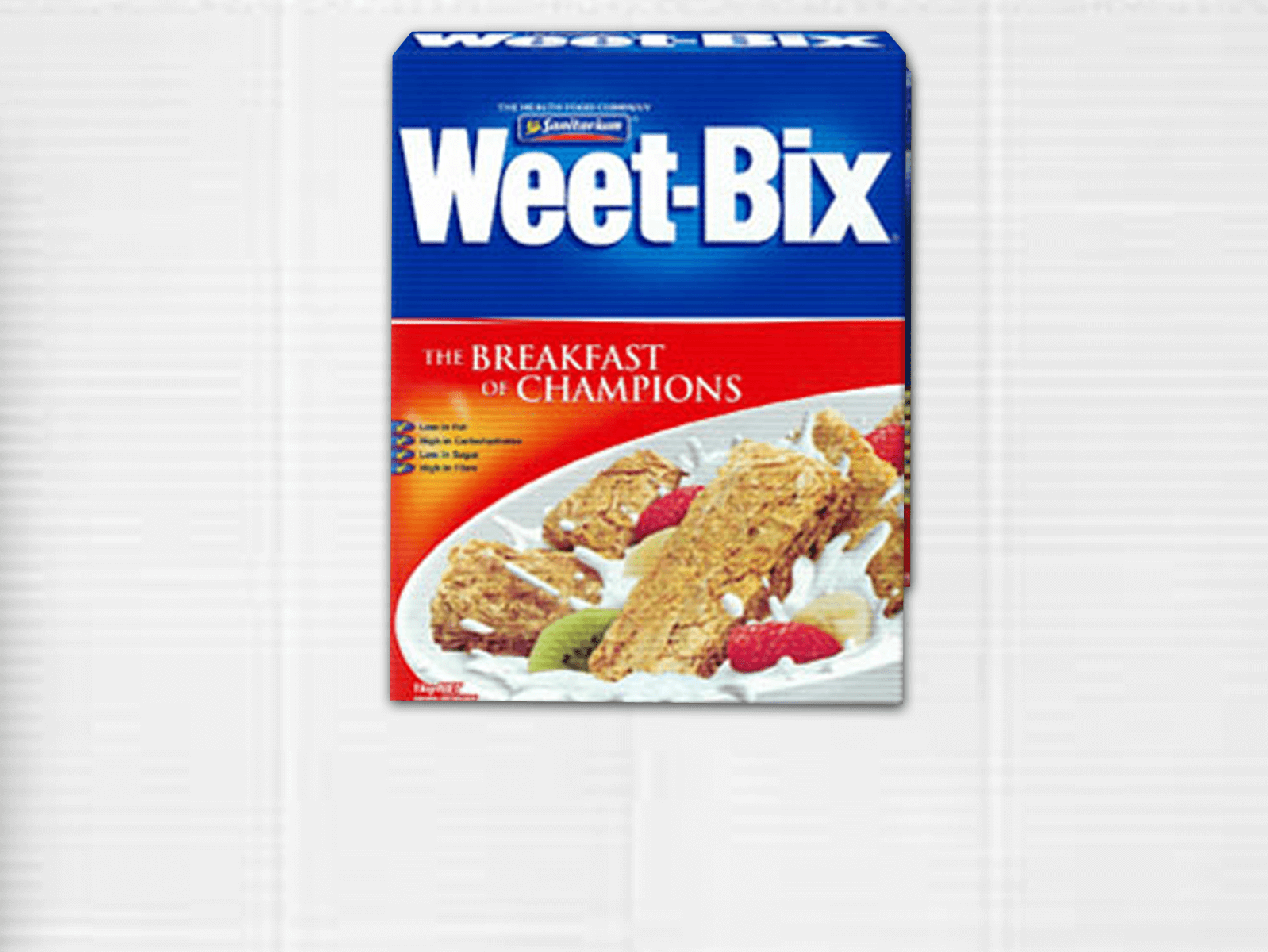
Two young cricket playing brothers, Shane and Brett Lee officially become part of the Weet-Bix family. Brett Lee establishes himself as Australia’s champion fast bowler, delivering balls at speeds of over 160km/hr.
With Weet-Bix as their official cereal, Australia wins the Ashes from 1989–2003.
Weet-Bix remains Australia’s favourite breakfast.
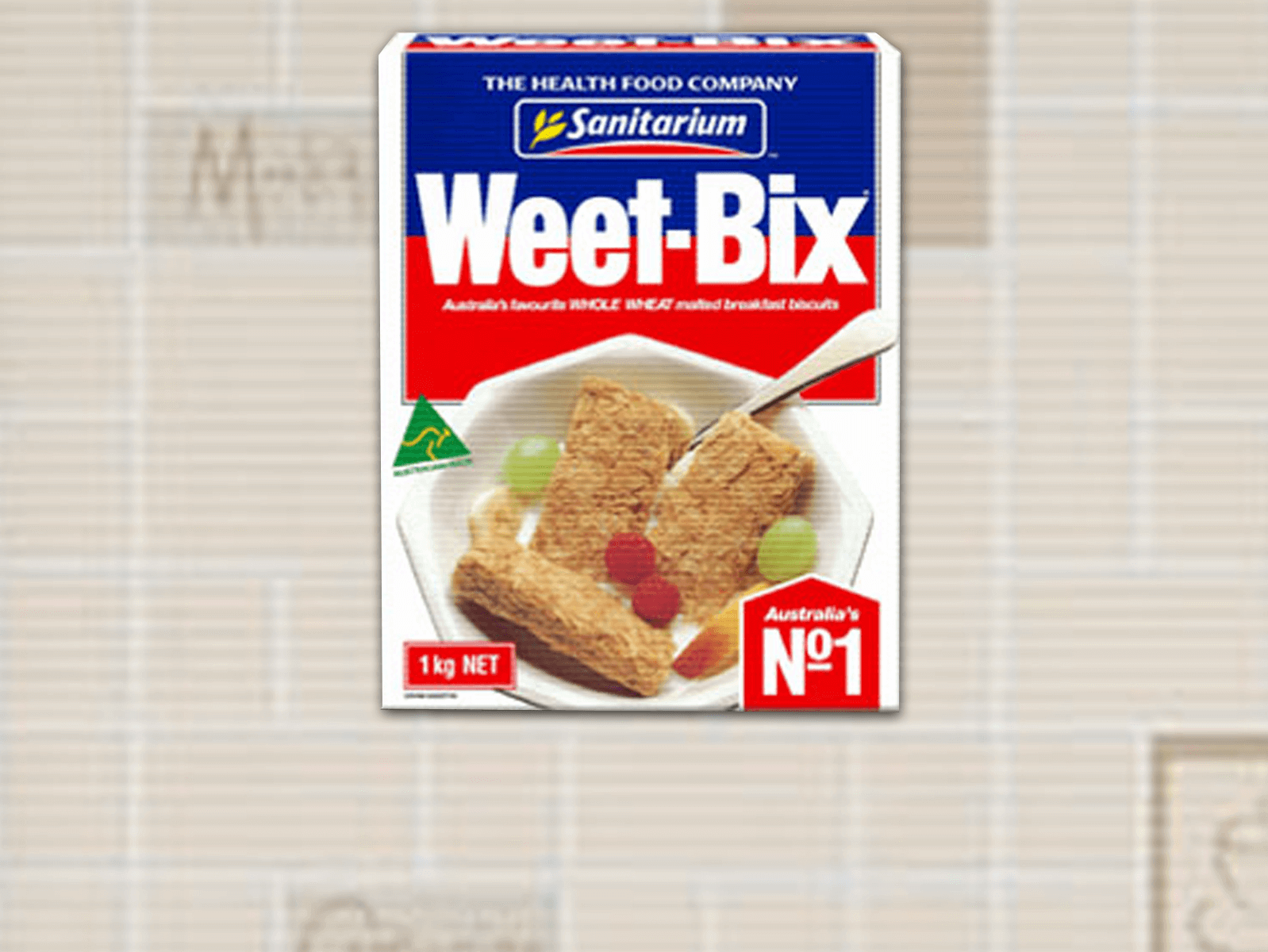
In 1985 the ‘Aussie Kids are Weet-Bix Kids’ jingle is created and continues to be used 25 years later.
Weet-Bix packets are transformed from pink to white and the Weet-Bix red and blue logo is born.
Australia celebrates winning of the America’s Cup Yacht Race.
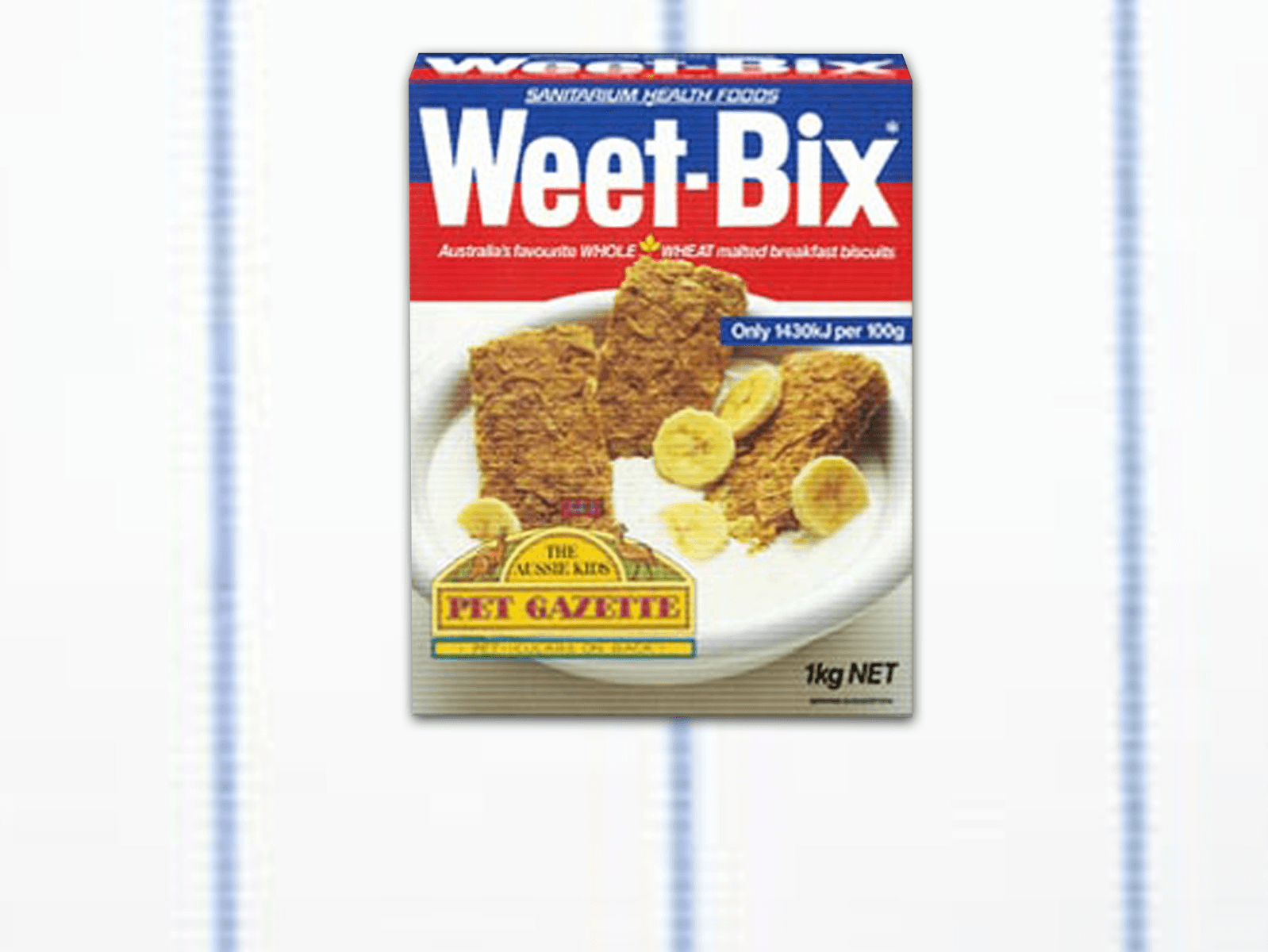
Weet-Bix runs a “Timeless Japan” promotion with Japanese themed prizes, including the very popular Rank Arena brand colour TV.
Weet-Bix collector card series included “Backyard Wildlife”, “Super Cars”, and “Sporting Feats”.
The Sydney Opera House is opened, Darwin is devastated by Cyclone Tracy, and Advance Australia Fair becomes our official national anthem.
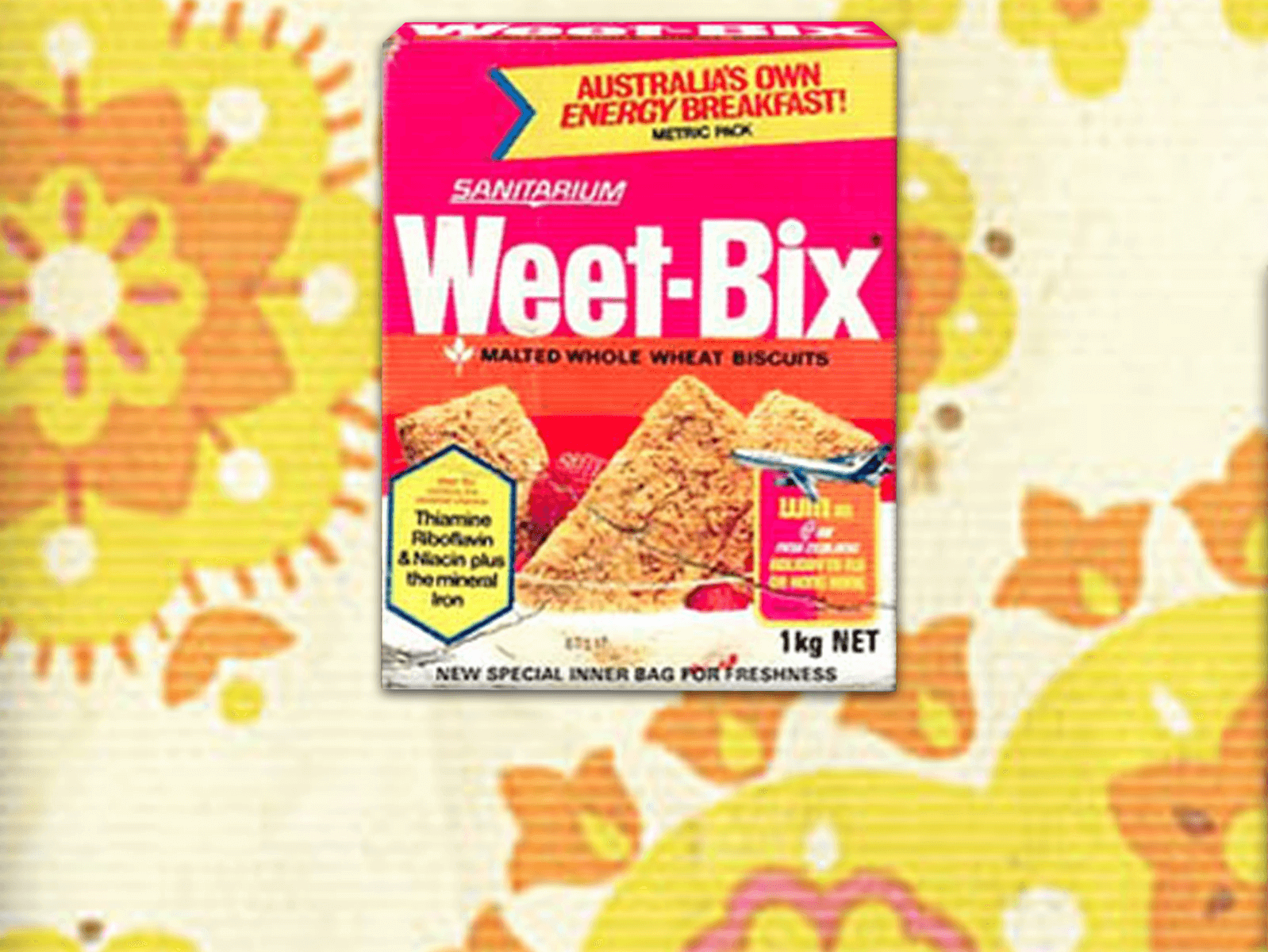
Weet-Bix’s first television commercial titled ‘Magician’ appears in 1961, made by Avondale Studios for 103 pounds.
Young Australians are encouraged to add hot milk to their Weet-Bix to provide them with “vim and vigour” every morning.
Two biscuits cost less than 2 pence (2 cents). Australian currency is changed to dollars and cents, replacing the pound.
Apollo 11 lands on the moon.
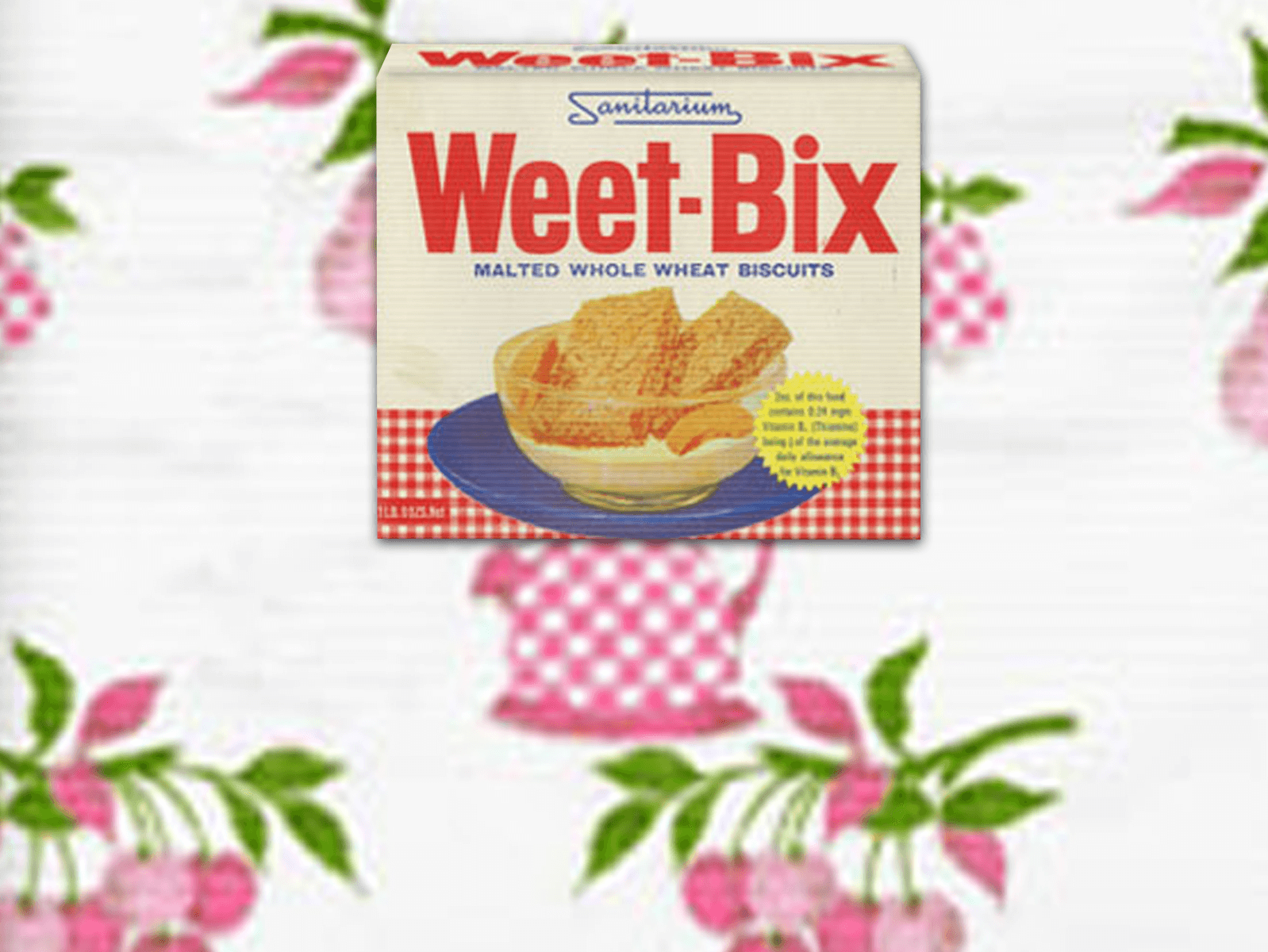
Sir Edmund Hillary eats Weet-Bix for breakfast during his climb of Mt Everest. Sir Edmund was the first climber to reach the summit.
Weet-Bix inspires the youth of the day with an “Amazing Wonders” card series, capturing both manmade and natural wonders on pictures plates placed inside every Weet-Bix packet. Collector albums are purchased from grocers for 6 pence (5 cents).
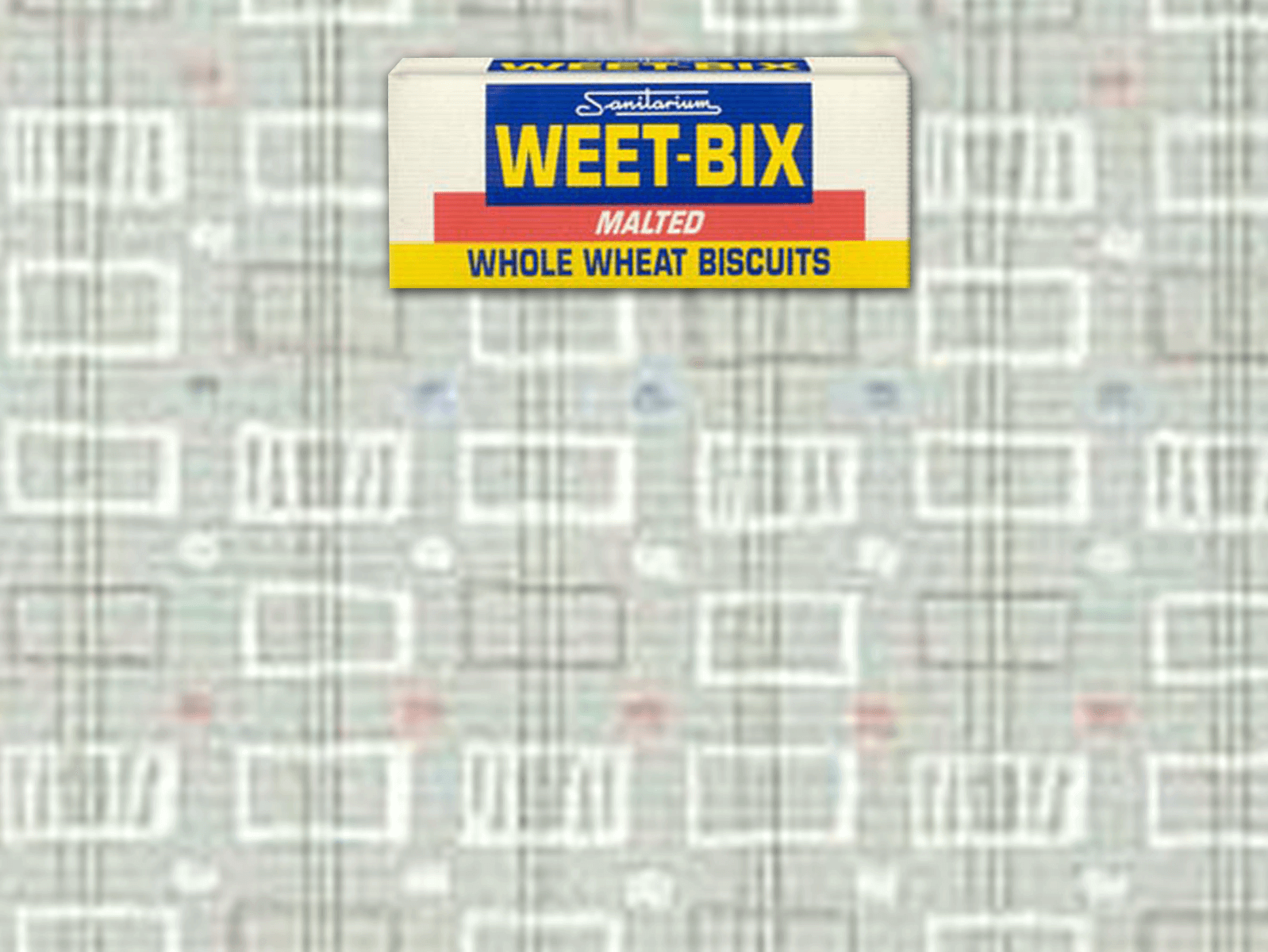
Australians are called to service during World War II. Over 30,000 servicemen are taken prisoner and 39,000 give their lives. Soldiers serving on the front-lines in Papua New Guinea and the Pacific are sent Weet-Bix.
The first collector’s cards are introduced in Weet-Bix packets. Vintage card sets are still traded on e-bay today.
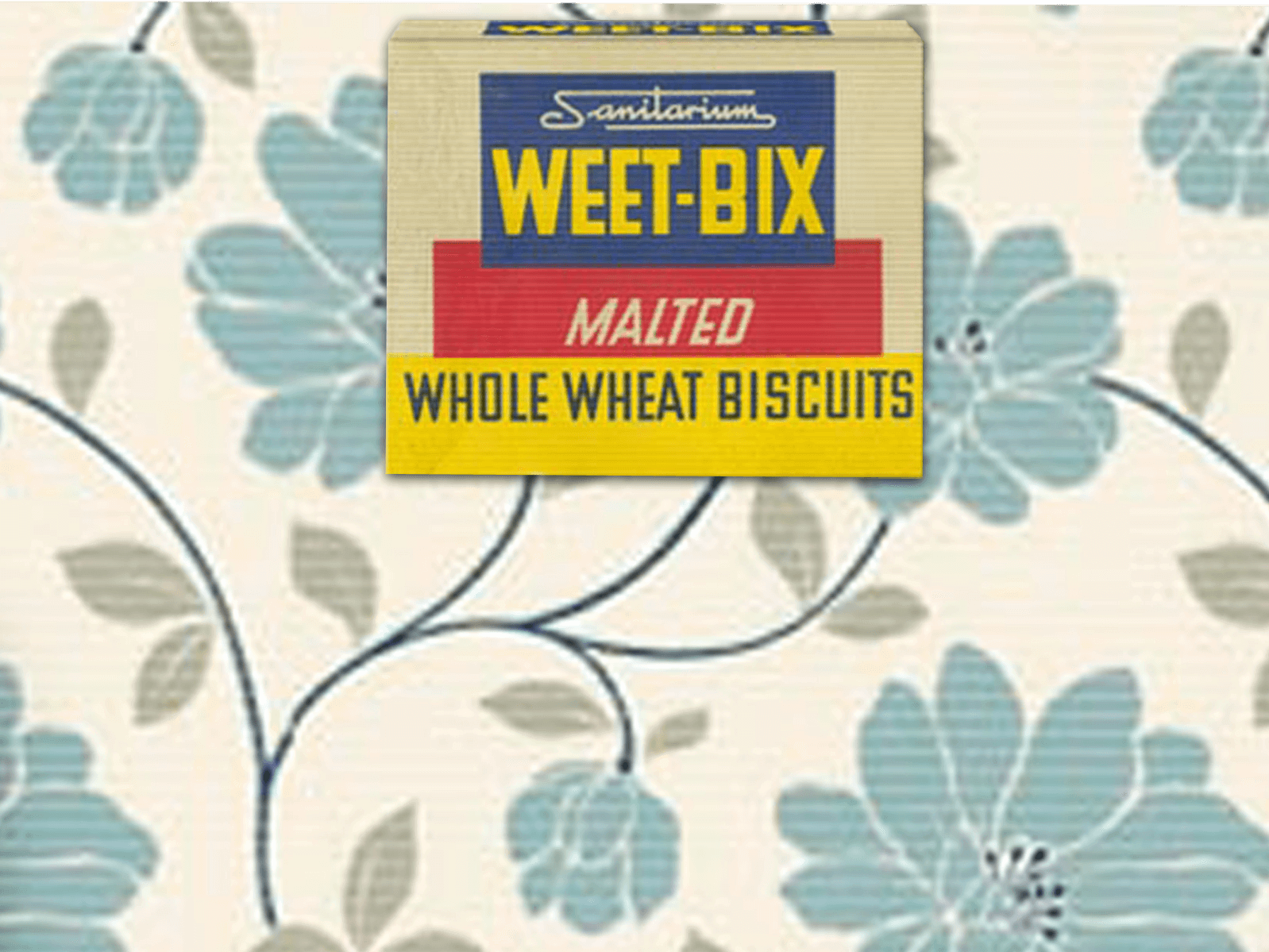
The Australian economy continues to struggle. By 1932, almost 1 in 3 Australians are out of work.
Sanitarium offer a series of gifts including linen and cookware, claimed using coupons found inside Weet-Bix packets.
The original Weet-Bix kid, Don Bradman, lifts the country’s spirits, scoring a record 452 not out in one cricket innings.
Another Aussie icon the Sydney Harbour Bridge, affectionately known as the ‘Coat Hanger’, opens in 1932.
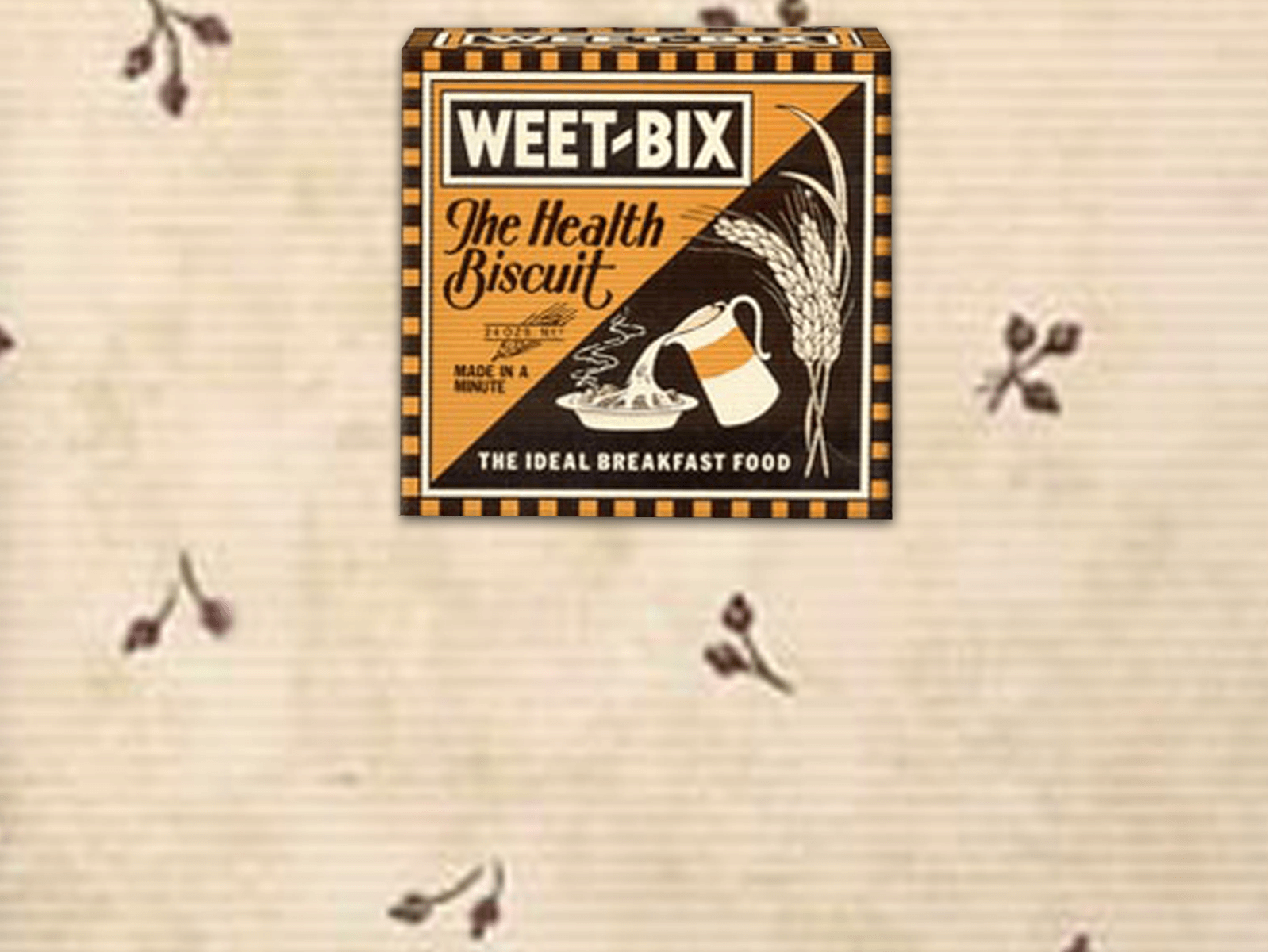
Weet-Bix becomes part of Australia’s breakfast history, bringing a new, budget-friendly health biscuit to the family breakfast table.
Original deliveries to grocers are made using a horse and cart.
In 1929 the stock market crashes, marking the start of The Great Depression.
